
Moissanit vs. Diamanten: Was sind die Unterschiede?
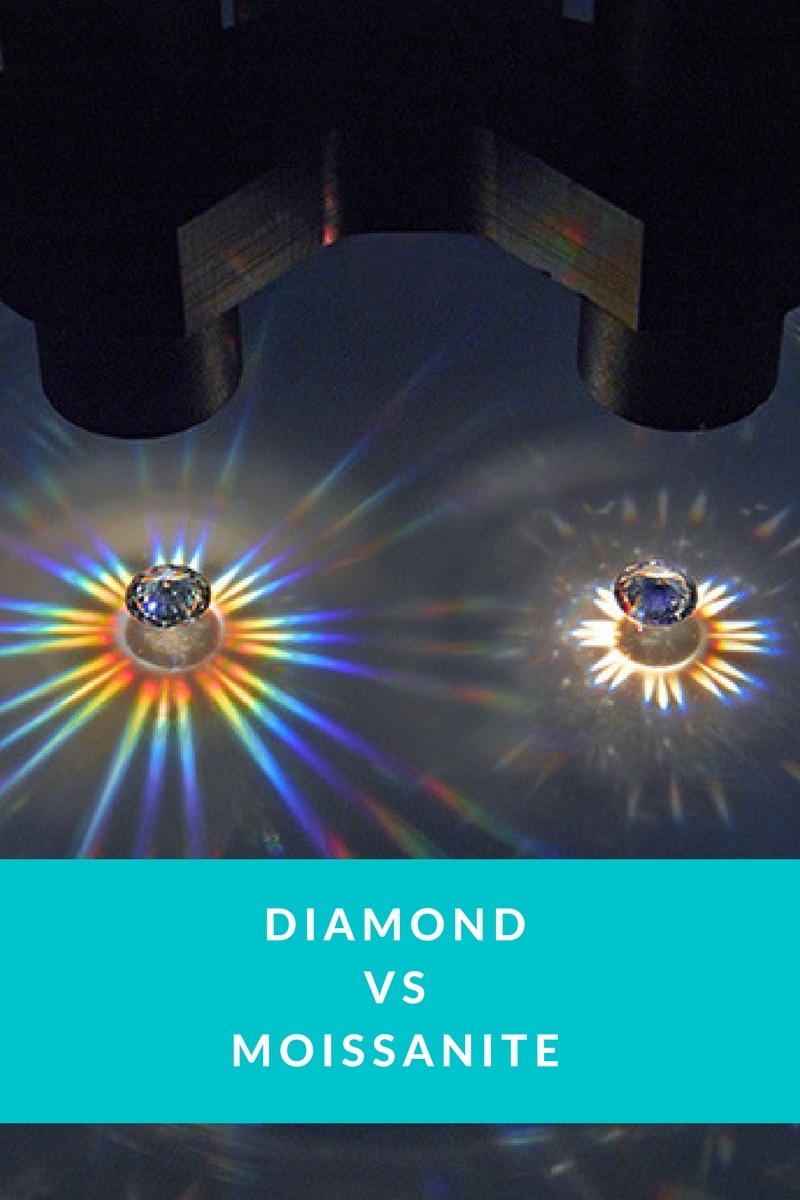
Diamanten sind seit Jahrzehnten ein fester Bestandteil von Verlobungsringen, doch Alternativen wie Moissanit erfreuen sich zunehmender Beliebtheit. Ob aus Kostengründen, aus ethischen Gründen oder einfach, um mit der Norm zu brechen – viele Frischvermählte wagen den Schritt und entscheiden sich für einen unkonventionellen Moissanit-Verlobungsring.
Aber Moment, was ist Moissanit?
Moissanit ist ein transparenter, farbloser Edelstein aus Siliziumkarbid, der vor Jahrhunderten durch einen Meteoriteneinschlag auf die Erde gelangte. Da natürliche Steine äußerst selten sind, sind fast alle Moissanite auf dem Markt synthetisch.
Warum entscheiden sich Menschen für Verlobungsringe mit Moissanit? Der Hauptgrund ist die Ähnlichkeit von Moissanit mit Diamanten bei deutlich niedrigerem Preis. Tatsächlich entstand der erste synthetische Moissanit 1891 zufällig bei dem Versuch, einen synthetischen Diamanten herzustellen!
Die große Frage ist: Ist Moissanit so gut wie ein Diamant? Diese Frage beantworten wir heute, indem wir Moissanit und Diamant hinsichtlich Stärke, Schönheit, Preisspanne und ethischer Beschaffung vergleichen.
Doch zunächst wollen wir unser Wissen zum Thema „synthetische“ Edelsteine noch einmal auffrischen.
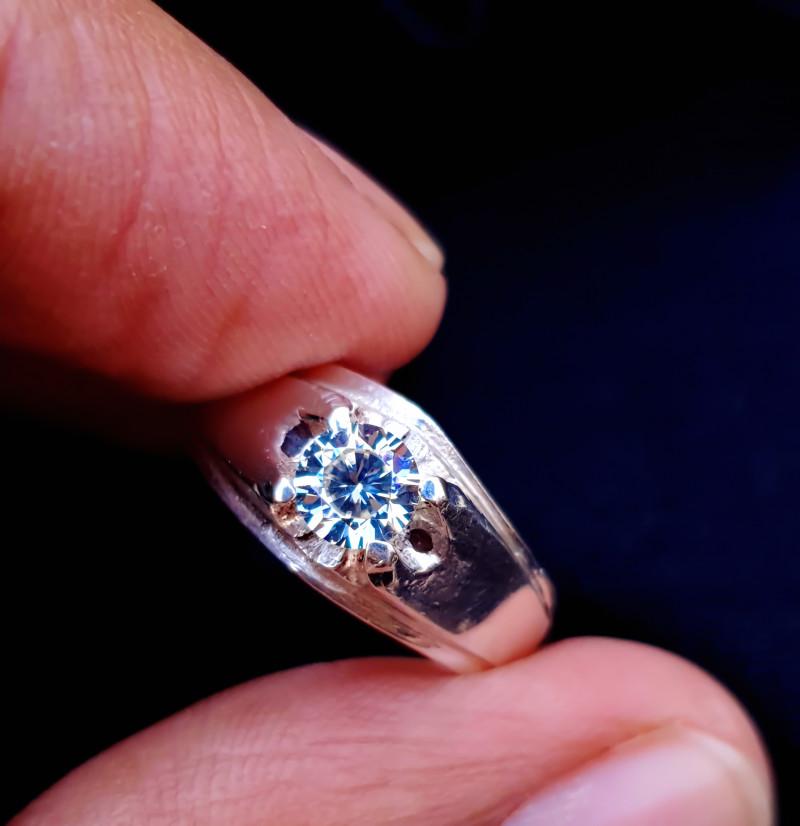
Was ist ein synthetischer Edelstein?
Begriffe wie „synthetisch“, „falsch“ oder „simuliert“ beziehen sich auf Edelsteine, die nicht auf natürliche Weise entstanden sind. Diese Begriffe sind jedoch nicht synonym.
Synthetische Edelsteine , wie synthetische Diamanten oder synthetische Moissanite, werden im Labor hergestellt. Sie haben die gleiche chemische Zusammensetzung und Eigenschaften wie ihre natürlichen Gegenstücke, werden aber über einen kürzeren Zeitraum künstlich hergestellt. Weitere Begriffe für „synthetisch“ sind:
Von Menschenhand geschaffen
Im Labor gezüchtet
Erstellt
Künstlich
Simulierte oder imitierte Edelsteine haben nicht die gleichen Eigenschaften wie die natürlichen Edelsteine, die sie imitieren. Zirkonia und Moissanit können Diamant-Imitationen sein, da sie natürlichen Diamanten ähneln, sich aber in ihrer chemischen Zusammensetzung unterscheiden.
Nachdem das geklärt ist, können wir mit den Vergleichen beginnen!
Moissanit vs. Diamantstärke
Sie möchten, dass Ihr Ehering bis ans Lebensende hält … oder idealerweise länger als Erbstück. Deshalb ist Langlebigkeit entscheidend! Haltbarkeit ist eine Kombination aus Edelsteinhärte, Robustheit, Spaltbarkeit und Stabilität.
Die Härte ist ein relatives Maß für die Kratzfestigkeit eines Edelsteins. Sie wissen vielleicht, dass Diamant der härteste Edelstein der Welt ist, aber kennen Sie den zweithärtesten Edelstein? Es ist Moissanit!
Mit 9,25 bis 9,5 auf der Mohs-Skala für Mineralhärte kommt die Kratzfestigkeit von Moissanit der von Diamant (10) am nächsten.
Neben Kratzern müssen Sie auch mit Absplitterungen und Brüchen rechnen. Hier kommt es auf Zähigkeit und Spaltbarkeit an.
Zähigkeit (oder Robustheit) beschreibt die Widerstandsfähigkeit eines Steins gegen Brechen oder Absplittern. Spaltbarkeit beschreibt, wie leicht ein Edelstein entlang bestimmter Achsen spaltet.
Diamanten sind spröde und zäh und weisen eine perfekte Spaltbarkeit (die am leichtesten zu spaltende Art) in vier Richtungen auf, was bedeutet, dass der Stein zerspringen würde, wenn man ihn in einem dieser vier Winkel trifft.
Moissanit hingegen ist deutlich härter als Diamanten und weist eine unscharfe Spaltbarkeit (ein schwieriger zu spaltender Typ) in eine Richtung auf. Daher ist Moissanit weniger bruchanfällig als Diamanten.
Schließlich gibt es noch die Stabilität, die die Bedingungen oder Chemikalien abdeckt, die einen Stein beschädigen könnten. Moissanite sind extrem hitzebeständig und benötigen zum Verdampfen deutlich höhere Temperaturen als Diamanten.
Plötzliche, starke Temperaturschwankungen können Diamanten zum Brechen bringen, Moissanit hingegen nicht. Beide Steine reagieren nicht negativ auf Chemikalien.
Der Einfluss des Schnitts auf die Haltbarkeit
Auch der Schliff eines Edelsteins kann seine Anfälligkeit für Beschädigungen beeinflussen. Facettenschliffe mit scharfen, spitzen Kanten können durch einen harten Schlag absplittern. Gängige Formen in dieser Kategorie sind Birne, Prinzess, Trillion und Marquise, aber auch individuelle, ausgefallene Formen mit spitzen Kanten können ebenso anfällig sein.
Formen mit abgerundeten Kanten und ohne Ecken – rund, oval, Kissen – sind weniger anfällig für Absplitterungen. Runde Formen sind am haltbarsten und zudem am häufigsten, sodass eine große Auswahl besteht.
Angenommen, Sie haben sich in einen Ring im Prinzessschliff verliebt. Sie können sich dennoch für diesen empfindlichen Schliff entscheiden und ihn mit der richtigen Schutzfassung vor Beschädigungen schützen.
Zargen-, Sechskant- oder Krappenfassungen sind für Diamanten oder Moissanit am sichersten. Moissanit hält höherem Druck stand als Diamant, daher sind Spannfassungen für Moissanit sicher, für Diamanten jedoch nicht.
Natürlich beeinflusst der Schnitt auch das Gesamterscheinungsbild, was uns zu unserer nächsten Aufschlüsselung bringt!
Moissanit vs. Diamant: Vergleich des Aussehens
Ein Vorteil synthetischer Edelsteine ist die bessere Kontrolle über ihr Aussehen. Einige Merkmale werden jedoch durch die Zusammensetzung des Steins bestimmt.
Das erste Merkmal, das wir uns ansehen, ist die Farbe.
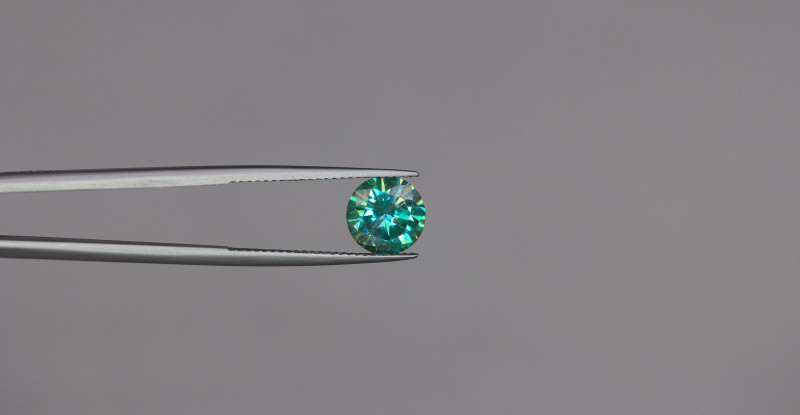 Bild: grüner synthetischer Moissanit
Bild: grüner synthetischer Moissanit
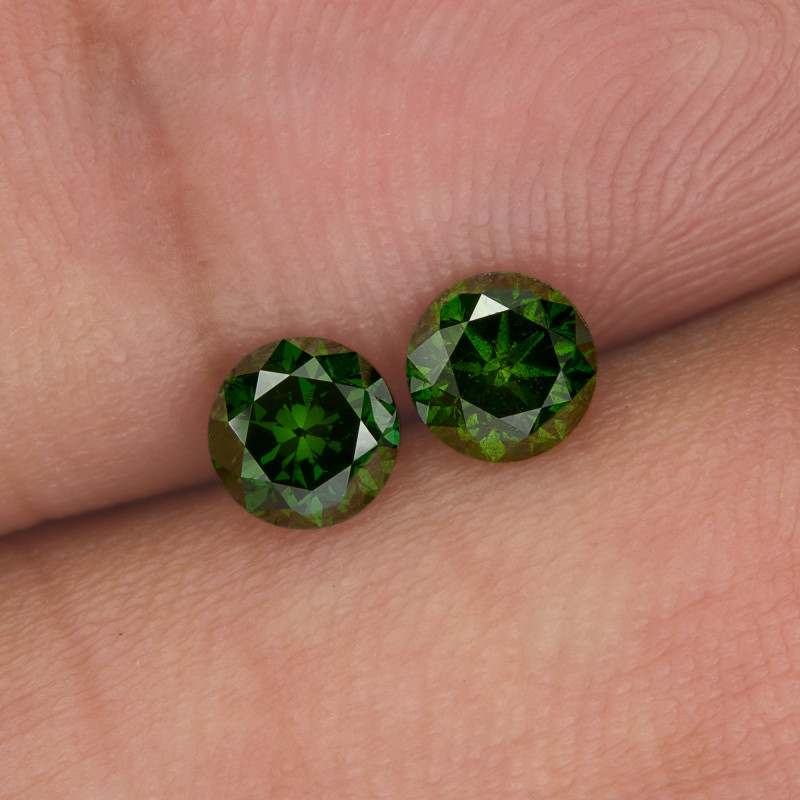 Bild: tiefgrüne Diamanten
Bild: tiefgrüne Diamanten
Farbe
Sowohl Moissanit als auch Diamant sind traditionell farblos. Beide haben oft gelbe bis braune Untertöne. Behandlungen können diese Untertöne entfernen, wenn sie zu deutlich sind.
Manche Käufer berichten, dass ihr „farbloser“ Moissanit bei natürlichem Licht leicht grün oder blau erscheint. Wir empfehlen, den Stein vor dem Kauf immer unter verschiedenen Lichtbedingungen zu betrachten.
Wünschen Sie sich einen Verlobungsring mit farbigen Edelsteinen ? Diamanten gibt es in zahlreichen Farbtönen, die teilweise durch Behandlungen entstehen. Moissanit-Behandlungen können Farbtöne wie Gold, Blau, Grün oder Rosa erzeugen, um nur einige zu nennen.
Farbige Diamanten, ob behandelt oder unbehandelt, kosten deutlich mehr als farbige Moissanite. Dennoch sind die farblosesten Diamanten oder Moissanite am wertvollsten.
Klarheit
Die Reinheit eines Edelsteins misst die Häufigkeit und Sichtbarkeit der Einschlüsse . Die Reinheit von Moissanit basiert auf den Reinheitsgraden von Diamanten. Jeder Grad, von FL (lupenrein) bis I3 (eingeschlossen), beeinflusst den Preis erheblich.
Der Herstellungsprozess von synthetischem Moissanit hat sich im Laufe der Zeit verbessert, sodass die meisten Moissanite auf dem Markt eine hervorragende Reinheit aufweisen. Natürliche Diamanten mit höherer Reinheit sind seltener und deutlich teurer.
Wird Moissanit mit der Zeit trüb? Nein! Eventuelle Trübungen lassen sich durch Reinigen beseitigen.
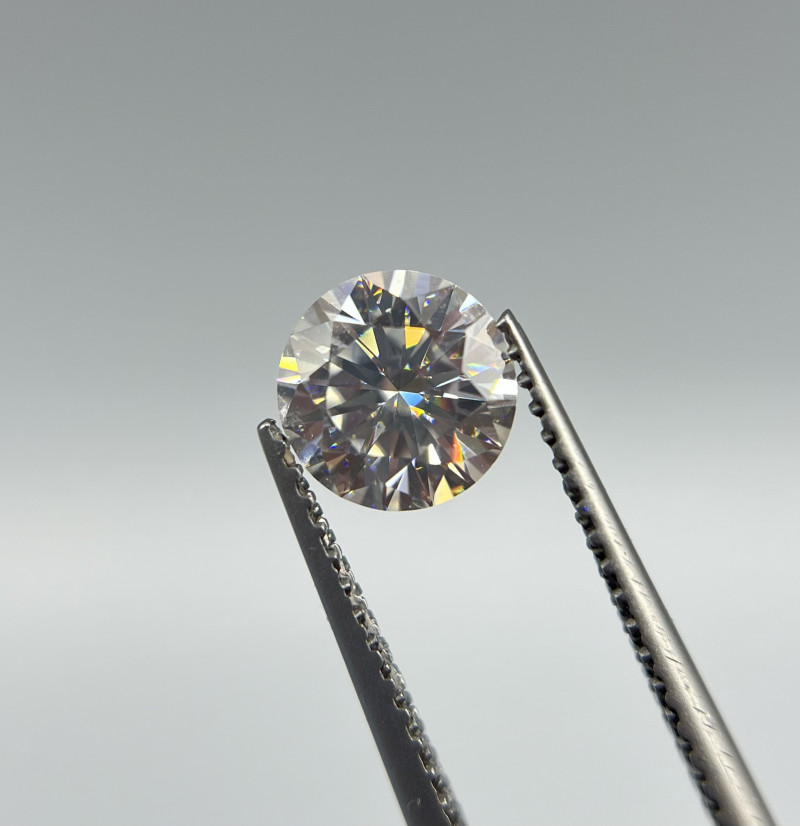 Bild: weißer Moissanit-Edelstein
Bild: weißer Moissanit-Edelstein
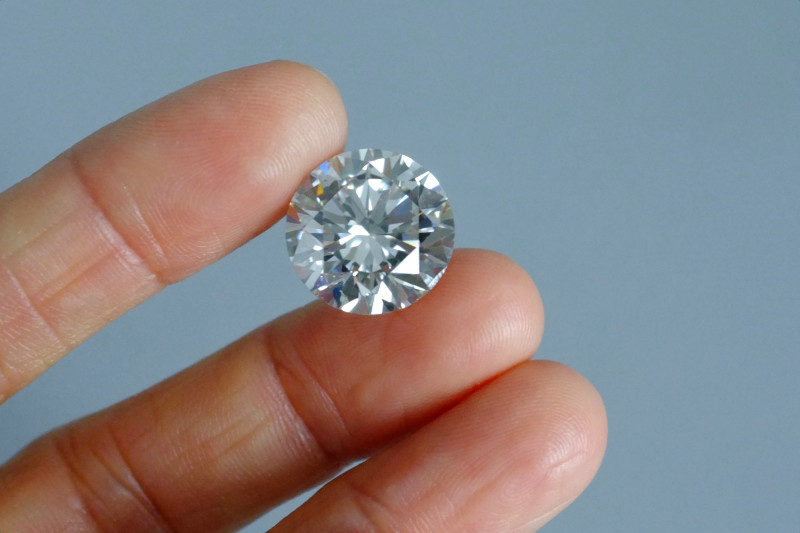 Bild: weißer Diamant-Edelstein
Bild: weißer Diamant-Edelstein
Brillanz und Feuer (Funkeln)
Wer bewundert nicht gerne das Funkeln eines Verlobungsrings? Der richtige Schliff trägt dazu bei, das Funkeln zu verstärken – ein runder Brillantschliff ist am besten geeignet –, doch die Streuung und Brillanz des Steins beeinflussen sein Glanzpotenzial.
Die Dispersion oder das Feuer beschreibt, wie viel buntes Licht von einem Edelstein reflektiert wird. Das Feuer eines Diamanten beträgt 0,044, während das Feuer eines Moissanits 0,104 beträgt – das ist mehr als das doppelte Feuer eines Diamanten !
Als nächstes betrachten wir die Brillanz: das vom Inneren des Steins reflektierte weiße Licht, gemessen am Brechungsindex. Ein höherer Brechungsindex bedeutet eine höhere Brillanz.
Der Brechungsindex von Moissanit liegt bei 2,59–2,69, der von Diamanten bei 2,41–2,42. Der Unterschied ist gering, bedeutet aber dennoch, dass Moissanit eine um 10 % höhere Brillanz als Diamanten aufweist.
Eine weitere erwähnenswerte Eigenschaft ist die Doppelbrechung , die bei Edelsteinen mit mehreren Brechungsindizes auftritt. Doppelbrechung oder Doppelbrechung liegt vor, wenn mehrere Lichtstrahlen in verschiedene Richtungen reflektiert werden. Diese Eigenschaft kann dazu führen, dass Steine pleochroitisch sind und aus verschiedenen Blickwinkeln unterschiedliche Farben aufweisen.
Diamanten sind nicht doppelbrechend, Moissanite hingegen schon. Die Doppelbrechung von Moissaniten beträgt 0,043.
Zusammenfassend lässt sich sagen, dass Moissanit über mehr Feuer, Brillanz und Doppelbrechung verfügt als Diamant.
Sie kennen vielleicht die vier Cs der Diamantqualität (Farbe, Schliff, Reinheit und Karatgewicht). Wir haben bisher einige davon besprochen. Als Nächstes besprechen wir das sogenannte fünfte C: den Preis.
 Bild: cremefarbener Moissanitring mit Zirkonia
Bild: cremefarbener Moissanitring mit Zirkonia
Moissanit vs. Diamantpreis
Zunächst einmal: Ist ein Diamant mehr wert als ein Moissanit? Ja, Diamanten erzielen höhere Preise als Moissanit.
Aber wie viel günstiger ist Moissanit als Diamant? Im Durchschnitt liegt der Preis für Moissanit bei etwa 10 Prozent des Diamantpreises, wenn alle anderen Faktoren gleich bleiben. Betrachten wir diese Faktoren, um die tatsächlichen Zahlen zu ermitteln.
Betrachtet man das Karatgewicht, sind größere Moissanite deutlich günstiger als große Diamanten. Ein runder Brillant mit guter Reinheit und schöner Farbe kann zwischen 7.000 und 51.000 US-Dollar pro Karat kosten, die meisten liegen jedoch bei etwa 26.000 US-Dollar. Ein 3-Karat-Moissanit mit den gleichen Eigenschaften kostet hingegen rund 3.000 US-Dollar.
Dennoch bevorzugen die meisten Paare Verlobungsringe mit 1 Karat. Ein nahezu farbloser, runder 1-Karat-Diamant mit guter Reinheit kostet normalerweise 5.000 US-Dollar, kann aber auch zwischen 1.800 und 25.000 US-Dollar kosten. Ein 1-Karat-Moissanit mit denselben Eigenschaften kostet normalerweise 300 US-Dollar, kann aber auch zwischen 450 und 600 US-Dollar kosten.
Ein 1-Karat-Moissanit-Verlobungsring aus Weißgold mit einem Stein im Rundschliff der Reinheit VS1 bis VS2 kostet normalerweise etwa 1.400 US-Dollar.
Wichtiger Hinweis : Moissanit hat eine geringere Dichte als Diamanten und ist daher kleiner (in mm) als ein Diamant mit gleichem Karatgewicht. Daher kategorisieren manche Verkäufer Moissanit nach Größe und nicht nach Gewicht.
Ein weiterer wichtiger Hinweis: Moissanit ist nicht die günstigste Diamantalternative. Beispielsweise kosten 1-Karat-Zirkonia nur 20 Dollar, obwohl Zirkonia nicht das Funkeln und die Haltbarkeit von Moissanit bietet.
Damit ist das „5. C“ der Kosten abgedeckt, aber es gibt ein 6. C, das wichtiger denn je geworden ist: Gewissen oder „Konfliktfreiheit“.
 Bild: Rohdiamant
Bild: Rohdiamant
Ethische Bedenken und Nachhaltigkeit
Vor Jahrzehnten machten sich nur wenige Menschen Gedanken darüber, woher ihre Diamanten stammen. Das änderte sich nach der Doku-Serie „Blood Diamonds“ aus dem Jahr 2006, als das Problem der Konfliktdiamanten ins öffentliche Bewusstsein rückte.
Konfliktdiamanten, auch „Blutdiamanten“ genannt, stammen aus Kriegsgebieten und werden verkauft, um Rebellenmilizen zu finanzieren, die versuchen, Regierungen zu stürzen. Mit diesen Diamanten sind humanitäre Probleme wie Zwangsarbeit, Kindersoldaten und der Verlust von Menschenleben verbunden.
Die Vereinten Nationen haben 2003 den Kimberley-Prozess ins Leben gerufen, um das Problem der Konfliktdiamanten durch eine stärkere Überwachung und Transparenz hinsichtlich des Weges eines Diamanten von der Mine bis zum Markt anzugehen.
Die am Kimberley-Prozess teilnehmenden Nationen müssen beim Import und Export ihrer Diamanten ethische Beschaffungskriterien erfüllen, die in der Kimberley-Prozess-Zertifizierung für Diamanten zusammengefasst sind.
Um Ihren Beitrag zur Beendigung des Handels mit Konfliktdiamanten zu leisten, achten Sie bei der Auswahl von Diamanten immer auf eine Kimberley-Prozess-Zertifizierung sowie auf Aufzeichnungen zu den Arbeitspraktiken, den Lieferkettenprozessen und den Nachhaltigkeitsbemühungen der Mine.
Eine weitere Möglichkeit, Ihren Teil dazu beizutragen, besteht darin, sich für einen Kunststein zu entscheiden!
Sind synthetische Steine ethischer?
Leider haben selbst Minen mit den ethischsten Arbeitsbedingungen immer noch negative Auswirkungen auf die Umwelt und die umliegende Region. Synthetische Edelsteine haben eine deutlich geringere Umweltbelastung.
Synthetische Edelsteine beseitigen Probleme wie Wasserverschmutzung, Umweltverschmutzung und Zerstörung des Ökosystems, die mit dem Bergbau einhergehen.
Das potenzielle Nachhaltigkeitsproblem bei der Herstellung synthetischer Edelsteine ist jedoch der Energieausstoß.
Edelsteine wachsen in Laboren in nur wenigen Wochen oder Monaten – deutlich schneller als die Millionen von Jahren, die natürliches Diamantenwachstum benötigt. Die dafür eingesetzten Maschinen benötigen jedoch rund um die Uhr Energie, sodass die Art der eingesetzten Energie entscheidend für die Nachhaltigkeit sein kann.
Die Nutzung erneuerbarer Energien trägt zur Nachhaltigkeit eines Labors bei. Allerdings können Labore, die fossile Brennstoffe nutzen, schädliche Kohlendioxidemissionen verursachen.
Allerdings sind die Emissionen des Labors laut einem Stanford-Vergleich aus dem Jahr 2020 immer noch 5,5-mal geringer als die Emissionen selbst der umweltbewusstesten Diamantenminen.
Die Wahl mit den geringsten Umweltauswirkungen sind Vintage- oder Erbstücke. Sollte dies nicht möglich sein, sind synthetische Moissanite immer noch deutlich ethischer und nachhaltiger als abgebaute Diamanten.
Metaphorisch betrachtet: Was bedeutet jeder Ring?
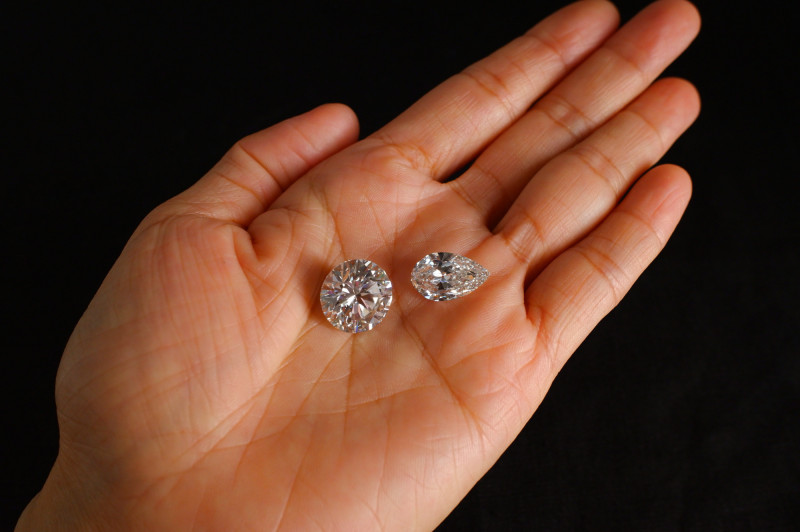 Bild: Diamant-Edelsteine
Bild: Diamant-Edelsteine
Bedeutung von Diamant- und Moissanitringen
Der Name Diamant kommt vom griechischen Wort adamas , was „unzerbrechlich“ bedeutet. Diese Eigenschaft ist sowohl wörtlich als auch im übertragenen Sinn zu verstehen, da Diamanten für hingebungsvolle, dauerhafte Liebe stehen.
Was bedeutet Moissanit? Moissanitringe stehen für unzerbrechliche Liebe, bringen aber auch Selbstvertrauen, Glück und Wohlstand. Sie sollen helfen, aus dem Alltag auszubrechen und sind daher perfekt für jedes abenteuerlustige Paar!
Diamanten gelten nach wie vor als höchstes Symbol für Luxus und Prestige. Daran wird sich wohl auch nichts ändern, auch wenn sich die Bedeutung von Status für manche zu verschieben scheint. Zudem geht die „Tradition“ von Diamanten in Verlobungsringen und die falsche Vorstellung ihrer extremen Seltenheit lediglich auf das Marketing der 1940er Jahre zurück.
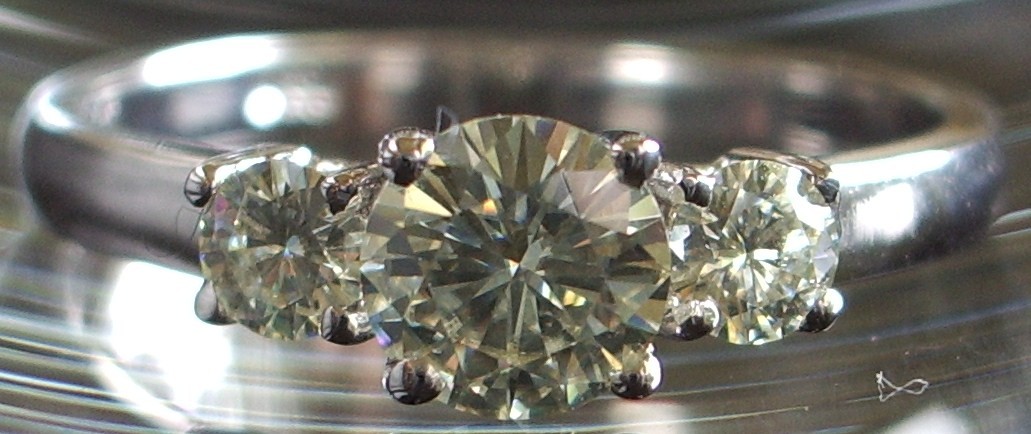
Alles in allem: Lohnt sich der Kauf von Moissanit?
Als Glanzstück Ihres Verlobungsrings macht der richtige Edelstein den Unterschied. Aufgrund seiner extremen Haltbarkeit, seines schönen Aussehens und seiner bewussten Herstellung ist Moissanit sicherlich eine würdige Wahl!
Die beste Wahl hängt natürlich von Ihren Prioritäten ab. Wünschen Sie sich einen Naturstein? Diamant (oder Alternativen wie Morganit) könnte Ihre erste Wahl sein. Wenn Sie das beste Preis-Leistungs-Verhältnis wünschen, ist Moissanit die richtige Wahl.
Sie können sich nicht entscheiden? Sie können immer einen Verlobungsring mit Moissanit und Diamant oder einen Diamantring mit Moissanit-Ehering wählen. Egal für welche Wahl Sie sich entscheiden, informieren Sie sich immer über den Stein, den Verkäufer und die Bezugsquelle, um sicher einkaufen zu können!
Immer noch nicht sicher? Entdecken Sie unsere Moissanit- und Diamant- Edelsteinkollektionen und finden Sie heraus, in welchen Stein Sie sich verlieben!
Suche nach Gemstone Encyclopedia
Verwandte Auktionen
In Verbindung stehende Artikel
Mineraloid-Edelsteine ähneln Mineralien, bilden aber keine Kristalle. Sie sind oft organisch, wie Perlen, Bernstein und Korallen. Erfahren Sie, wie sie sich von Mineralien unterscheiden und welche Edelsteine Mineraloide sind!
2nd Oct 2018
Bevor Sie auf die Knie fallen, lassen Sie uns über etwas sprechen, das allzu oft übersehen wird: lose Diamanten vs. gefasste Diamanten.
11th Sep 2019
Suchen Sie einen strahlend blauen Edelstein? Lesen Sie unseren Ratgeber zum Vergleich von Blautopas und Aquamarin und finden Sie heraus, welcher blaue Edelstein am besten zu Ihnen passt!
7th Sep 2020
Neue Artikel
Schnitzereien aus Palmenelfenbein, auch pflanzliches Elfenbein genannt, sind eine natürliche Alternative zu Elefantenelfenbein und werden ethisch vertretbar aus den Nüssen der südamerikanischen Phytelephas-Palme gewonnen. Erfahren Sie in diesem Ratgeber alles Wissenswerte über Palmenelfenbein!
15th Jan 2026
Chrysanthemenblütensteine sind Naturwunder mit einem weißen Kalzit-, Celestin- oder Andalusit-Blumenmuster, das sich vom schwarzen Kalkstein oder Tonstein abhebt.
13th Jan 2026
Der Regenbogen-Gitter-Sonnenstein ist eine Feldspatvarietät mit drei wunderschönen optischen Effekten, die durch verschiedene Einschlüsse hervorgerufen werden. Sein feuriges Farbenspiel und das Gittermuster machen ihn zu einem seltenen Sammlerstück!
12th Jan 2026
Artikelkategorien
How To's is where you will find helpful articles from gem Rock Auctions on how to cut gemstones, select gemstones and buy gemstones.
9 Artikel





